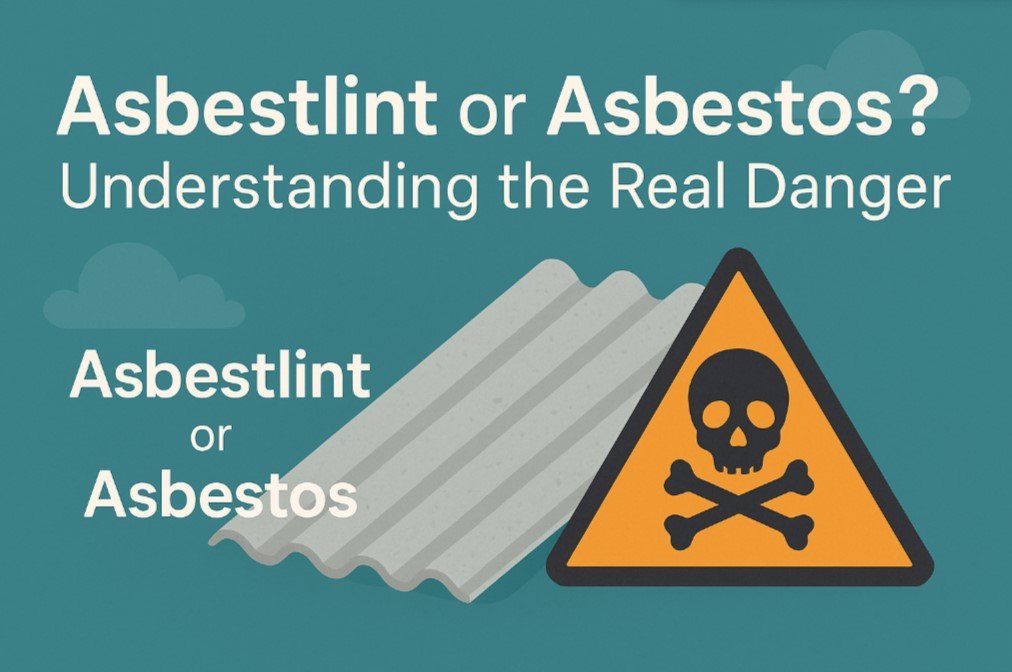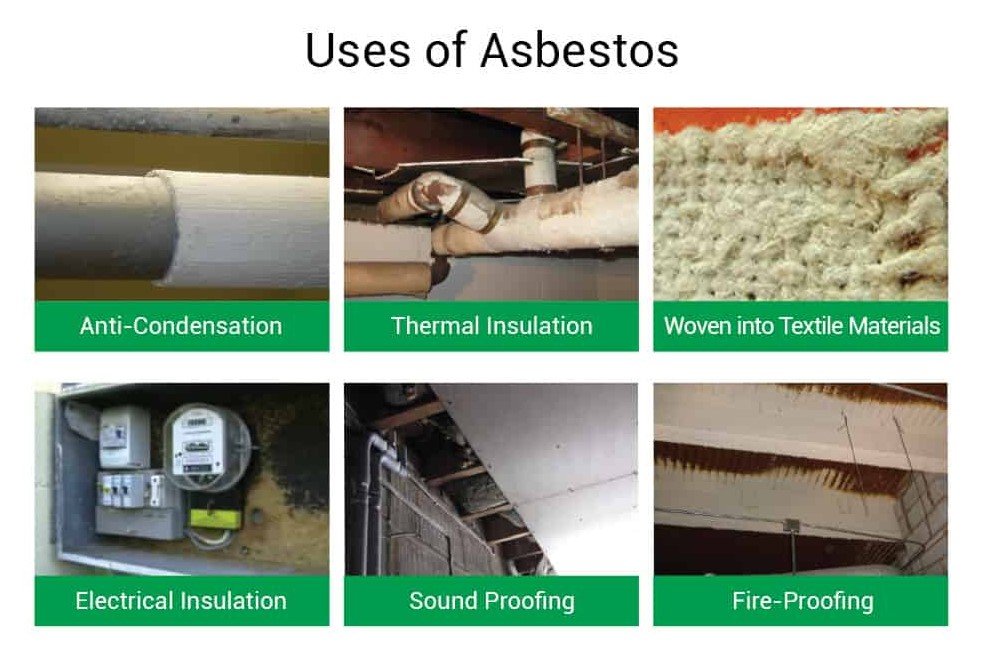Health
Asbestlint or Asbestos? Understanding the Real Danger

You may have seen the word “asbestlint” online or in a search box. At first glance, it might seem like a technical term or something related to dust or construction. But the truth is, “asbestlint” is not a real word. It’s a common misspelling or typo of the word “asbestos.” Even though the word is incorrect, it leads to an important and serious topic. Asbestos is a real and very dangerous material that was once widely used in buildings and products. This article will help you understand what asbestos is, why people sometimes search for it as “asbestlint,” the health risks it poses, where it is still found, and how to stay safe.
What is Asbestos?
Asbestos is a group of naturally occurring minerals made up of fine, durable fibers. These fibers are resistant to heat, fire, and chemicals, and they do not conduct electricity. Because of these properties, asbestos was once widely used in construction materials, insulation, roofing, and many other products.
There are six main types of asbestos minerals, but the three most commonly used are chrysotile, amosite, and crocidolite. Chrysotile, also called white asbestos, is the most commonly found form in homes and buildings.
The fibers in asbestos are so small that they can easily become airborne. When this happens, people can breathe them in without noticing. Over time, this can lead to serious health issues.
The Origin of the Word “Asbestlint”
The term “asbestlint” does not exist in scientific or industrial records. It is most likely a mistaken spelling of “asbestos” mixed with the word “lint.” This mistake may come from the idea that asbestos looks like a fluffy or dusty material. In some forms, asbestos does appear as a soft, fibrous texture that could be confused with lint. However, the dangers of asbestos are far more severe than household lint.
By correcting the word to “asbestos,” we move from confusion to clear understanding. It is important to know that asbestos is not harmless, and even small exposures can lead to long-term health problems.
Where was Asbestos Used?

Image Source: Human Focus
For many years, asbestos was used in thousands of products around the world. It was especially popular from the 1940s to the 1970s. It could be found in:
- Insulation for homes and buildings
- Roof shingles and siding
- Floor tiles and ceiling tiles
- Cement and plaster
- Brake pads and clutch parts in cars
- Pipes and boilers
- Fireproof clothing and blankets
Because of its fire-resistant properties, asbestos was seen as a useful and safe material. At the time, most people did not know it could cause health issues. Now we know better.
Is Asbestos Still in Use Today?
In many countries, the use of asbestos is banned or heavily restricted. However, in some places, it is still used in limited ways. Even in countries where asbestos is banned, many old buildings still contain asbestos products. If these materials are damaged or disturbed, they can release harmful fibers into the air.
If you live in a home built before the 1980s, there’s a chance it may contain asbestos in some form. It could be in insulation, floor tiles, or roofing. That’s why knowing how to identify and deal with asbestos is important.
Why is Asbestos Dangerous?
Asbestos becomes dangerous when its fibers are released into the air and breathed in. These tiny fibers can get stuck in the lungs and remain there for a long time. Over time, they cause inflammation and scarring. This can lead to several serious diseases:
- Asbestosis: A chronic lung disease caused by long-term exposure to asbestos. It leads to breathing problems, coughing, and chest pain.
- Lung Cancer: Inhaling asbestos can increase the risk of lung cancer, especially in people who smoke.
- Mesothelioma: A rare and aggressive cancer that affects the lining of the lungs, abdomen, or heart. It is almost always caused by asbestos exposure.
- Pleural Thickening: The lining of the lungs becomes thick and hard, making it difficult to breathe.
These diseases may take many years to appear. In some cases, symptoms don’t show up for 20 to 50 years after exposure. That’s why even brief exposure to asbestos should be taken seriously.
How Do People Get Exposed to Asbestos?
Most people are exposed to asbestos through their job, home, or environment. Here are the most common situations:
- Construction and demolition: Workers who handle insulation, tiles, or old building materials are at high risk.
- Renovation: DIY homeowners may disturb asbestos-containing materials without knowing it.
- Shipyards and factories: Asbestos was widely used in ships and industrial equipment.
- Mining: People who worked in asbestos mines or lived near them may have been exposed to dust in the air.
Family members of workers can also be affected. In the past, workers often brought asbestos dust home on their clothes, putting others at risk.
What to Do If You Think You Found Asbestos
If you think your home or workplace contains asbestos, do not touch it. Asbestos is not dangerous unless it is disturbed. If you try to remove it without proper training, you could release harmful fibers into the air.
Here are the steps to follow:
- Stop any activity in the area: Avoid sweeping, drilling, or cleaning the space.
- Do not break or damage the material: This includes tiles, insulation, or pipes that might contain asbestos.
- Contact a licensed asbestos professional: They can test the material and safely remove it if needed.
Most governments have laws and safety guidelines for dealing with asbestos. Always check your local rules before taking any action.
How to Stay Safe
Whether you are a homeowner, renter, or worker, there are steps you can take to reduce the risk of asbestos exposure:
- Know the age of your building: If it was built before the 1980s, be cautious during repairs or renovations.
- Use protective gear: Professionals wear special suits and masks when handling asbestos. Never try to remove it yourself.
- Hire trained experts: Always use certified professionals to inspect or remove asbestos.
- Avoid disturbing materials: If you suspect something contains asbestos, leave it alone and call an expert.
- Keep good air circulation: Although it won’t remove asbestos, fresh air helps lower the concentration of airborne fibers.
The Role of Education and Awareness
Many people still don’t know how dangerous asbestos is. Others may confuse it with harmless materials like lint, dust, or even mold. This is why spreading accurate information matters. By educating people on the difference between “asbestlint” and asbestos, we can raise awareness and reduce health risks.
Governments, schools, and workplaces can all play a role in educating the public. Clear labels, warning signs, and regular inspections are important tools for prevention.
The Importance of Regulation
Many countries now regulate or ban the use of asbestos. These rules help keep people safe, but they only work if people follow them. Some key regulations include:
- Safe removal guidelines: Licensed professionals must use specific tools and follow strict procedures.
- Workplace safety rules: Employers must protect workers who may be exposed to asbestos.
- Public health education: Governments often publish guides to help people recognize and handle asbestos risks.
If you live in a country where asbestos is still allowed, contact your local health authority to learn how to protect yourself.
Conclusion
The word “asbestlint” might be a harmless spelling mistake, but the material it refers to is anything but harmless. Asbestos is a serious threat to health, and it has caused illness and death for thousands of people around the world. Learning the correct term and understanding the danger behind it is the first step to staying safe.
Now that you know the truth, take action if needed. Check your home, learn your rights, and always call a professional if you suspect asbestos. It’s better to be safe than sorry when it comes to your health and your future.
By sharing this article with others, you can help stop the spread of confusion and protect people from a danger they may not even know exists.
-

 Self Improvement2 months ago
Self Improvement2 months agoUsing BCBS Rehab to Access Quality Addiction Care
-

 Games2 months ago
Games2 months agoPusoy Strategies for Play That Also Work in Pusoy Dos in English
-

 Law2 months ago
Law2 months agoHow Can a Car Accident Attorney Help You?
-

 News2 months ago
News2 months agoCreating Acoustic Comfort in Restaurants: The Overlooked Ingredient of a Perfect Dining Experience






